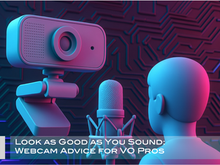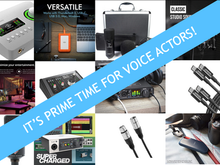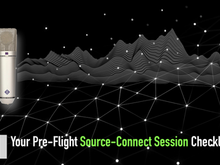High-Pass Filters and Pads: The Bottom Line
- Frank Verderosa
- Aug 22, 2023
- 3 min read
Updated: Sep 11, 2023

In an earlier post, I discussed general noise causes and solutions, and some of the myths surrounding them. But I want to get a little more specific about problems created at the source. Some microphones come with built in features that seem to have a way of biting voice actors in the butt, much the way engaging interface processors like Focusrite’s Scarlett air or SSL’s 4K button do, which I’ve previously written about here. Microphones on the high-end like the Neumann U87 down to lower cost mics like the the Audio Technica AT4040 offer both pads and high-pass filters. Often times people using these mics figure they’re features- so I should use them. Let’s talk about why that’s problematic.
High-Pass filters in less expensive microphones tend to carve out too much low end energy, potentially robbing your voice of its warmth.
High-pass filters in microphones are designed to attenuate or reduce low-frequency sounds while allowing higher frequencies to pass through. They're useful for minimizing unwanted rumble, handling noise, and other low-frequency disturbances. By cutting out bass-heavy elements, high-pass filters help improve the overall clarity and quality of audio recordings, especially in environments with potential low-frequency interference. Even in a well treated booth, and even with a shock mount- low end energy has a way of working its way into your recording. The GOOD news is that it is often inaudible, even if you’re using a DAW that shows a spectrogram with a very scary low energy mountain range. So should you engage it on your mic? Probably not. Here’s why.
Less expensive microphones tend to carve out too much low end energy, potentially robbing your voice of its warmth. For voices that aren’t bass heavy, this may not be an issue. However, time and time again when consulting with actors on their sound quality, when I feel their voice is too thin- engaged high-pass filters are the culprit. Often times it’s because they’ve been told by other engineers or actors that engaging them as a first step in noise removal. That’s not actually true. You’re only removing very low frequency energy- which is often inaudible.
So when DO you use a high-pass filter? As an engineer, I would say almost never. In fact at most studios, we use Neumann U87s in every booth. They are ubiquitous. But one large animation company doesn’t want them used at all either! They actually recommend the high-pass filter within Pro Tools to carve out everything below 100hz, because it’s a more accurate and subtle cut than most microphone high-pass filters.
Let’s shift our focus to the other button often misused or misunderstood on microphones. The PAD. A PAD (or pad attenuator) on a microphone reduces the microphone's sensitivity to incoming sound levels. It's used to prevent distortion and overload when recording loud sound sources, such as high-volume instruments or close-up vocals. The PAD attenuates the incoming signal before it reaches the microphone's sensitive components, allowing for accurate and undistorted audio capture. This feature is valuable for maintaining audio quality and preventing clipping in situations where the microphone would otherwise be overwhelmed by high levels of sound pressure. As an engineer on music projects, I would generally use a PAD on mic in front of a drum, or a guitar amp. For really loud vocalists, they can also come in handy.
As a voice actor, you likely don’t need to engage this. Even in big video game sessions where we have to record death screams, a simple turning down of the input gain on the mic pre gets us to where we need to be. If your interface has a button for an instant 10 decibel drop, then this might be a really handy way to cut your gain for shouting, efforts, etc. But the PAD is generally found on the back of mics, and not as readily accessible as you’d want it to be in a session- often even hidden by your shock mount. Also, as previously discussed, a lower level does not lower your background noise- so forget the notion that engaging a 10db PAD is going to help your sound. Just because you turned it down in your ears doesn’t make it go away.
Hopefully this helps you to understand and perhaps demystify the tools you have to work with. As always, if you want to check your sound, you can always reach out.


































Comments